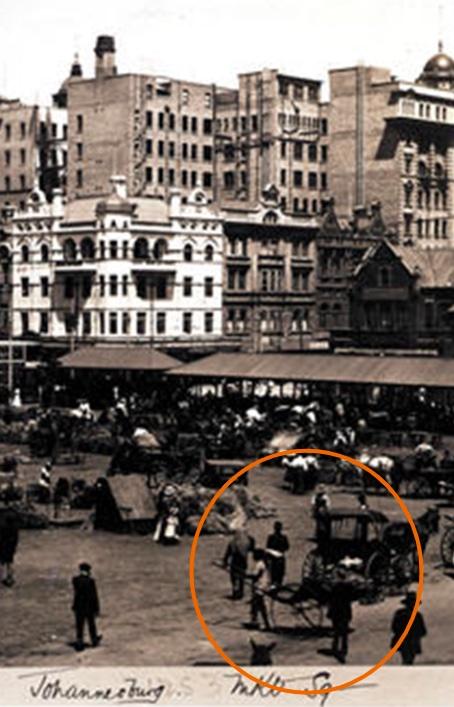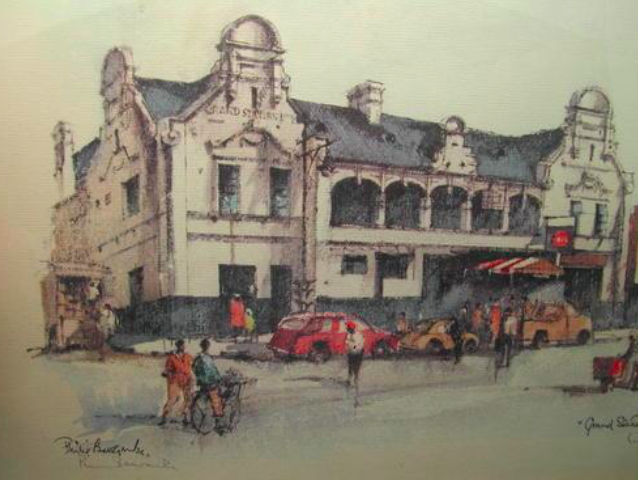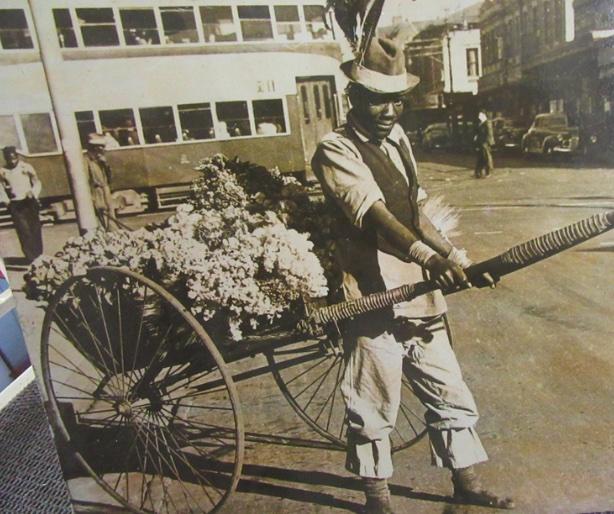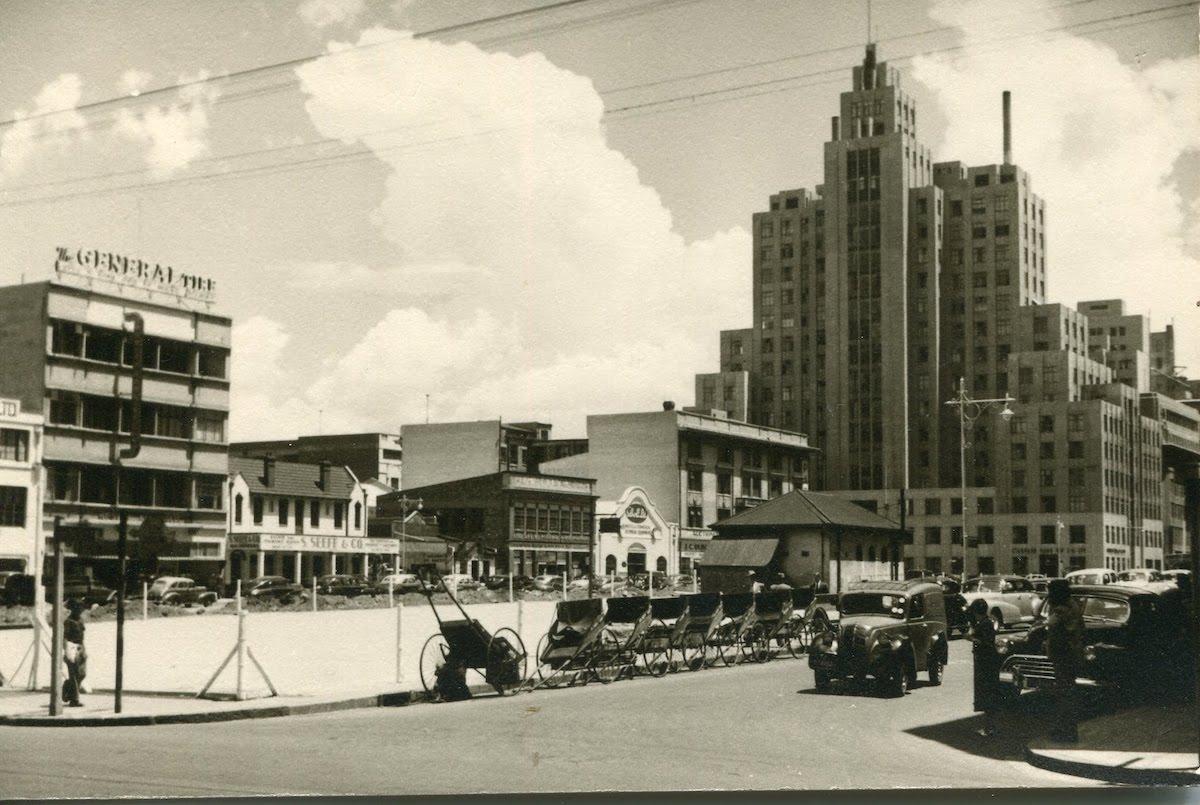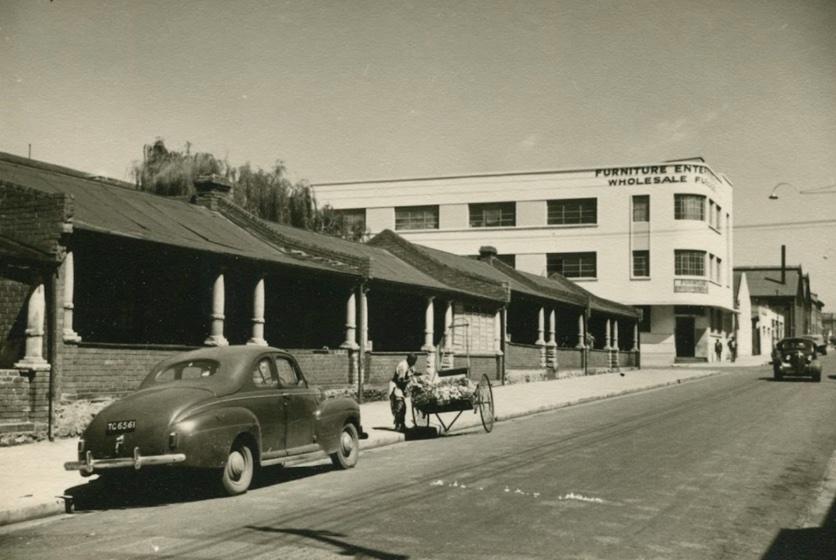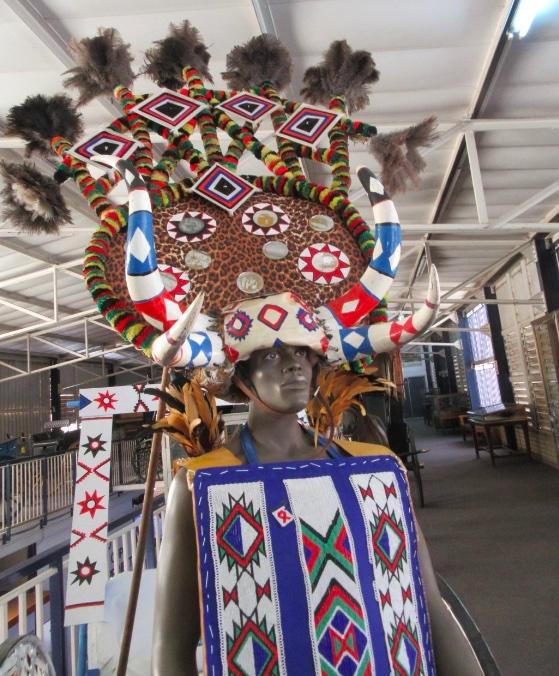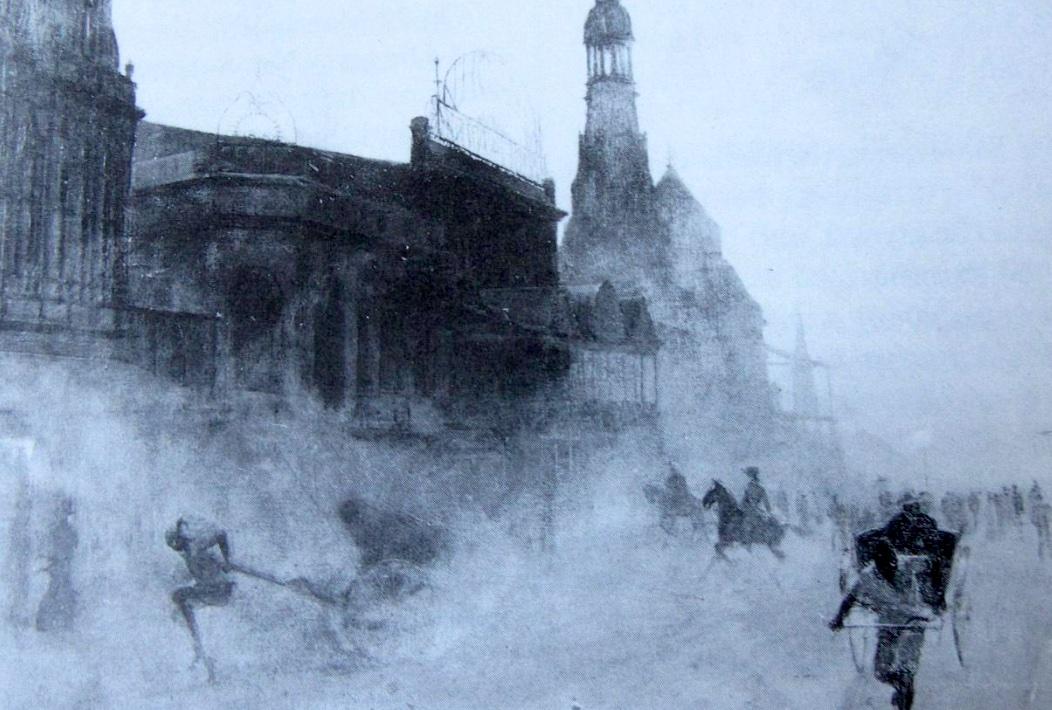
Disclaimer: Any views expressed by individuals and organisations are their own and do not in any way represent the views of The Heritage Portal. If you find any mistakes or historical inaccuracies, please contact the editor.
The above painting by Frank Lewis Emanuel, 1899, shows a rather gothic view of early Johannesburg rickshaw men ferrying their passengers through a dust storm. Emanuel (1865–1948) was a painter, printmaker, draughtsman and writer who was born in London. Most of his art tackled British seaside towns and seaside vistas, so the Johannesburg painting is a bit unusual. There is no information on when Emanuel came to Johannesburg.
Rickshaws or rickshas are small two-wheeled cart-like passenger vehicles, often with a fold-down top, and pulled by one person, formerly widely used in Japan and China, and also called jinrickshaws or jinrickshas.
Rickshaws in early Johannesburg
Most photographs of early Johannesburg, when scrutinised, do not show any rickshaws. Instead, the early streets of Johannesburg are filled with carts, cabs and wagons which are horse, mule or oxen-drawn. Later on there were horse-drawn or electric trams, bicycles, or motor vehicles, depending on the era. Yet rickshaws were part of the bustling city landscape and remained in use until the 1960s.
Market Square in the early 20th century showing a rickshaw in the foreground. (SAR Tourism and Publicity and Travel Department. DRISA. ZA 0375-N-N01283)
Rickshaws for a growing city
As the city grew, rickshaws were still catered for as a form of transport and this is indicated in the Johannesburg Municipal Council minutes from March 1905 which states that additional accommodation was being considered and planned in the city for rickshaws. The Jinrickshas licenced since the beginning of that year numbered 463, but existing stands numbered only 129. There was therefore a need to increase the size of the areas for stands and also erect new stands. The stand at Harrison Street opposite the Market buildings was to be enlarged to accommodate 40 rickshaws instead of 16. The existing stand along Rissik Street, ‘inside the foot path’ and opposite the General Post Office, was to be extended, to accommodate 40 instead of 20 rickshaws. The stand in Fox Street, along the south side of Joubert Street, was to be increased to accommodate 20 instead of 10 rickshaws.
There was also a new stand for 12 rickshaws built in 1905, at Jeppestown on the east side of Madison Street between Fox and Main Street, for 12 Rickshaws. This was most likely associated with the Jeppe Railway Station and the Grand Station Hotel (built 1897).
Grand Station Hotel (Bawcombe's Johannesburg)
New stands were also proposed for 12 rickshaws at End Street between Commissioner and Market Street and for eight rickshaws in the triangle between Berkley Avenue and the Sutherland Hotel. All of these changes were approved and gazetted, with notice given in the Rand Daily Mail in 1905. No trace of any of these early rickshaw stands remains to my best knowledge.
Rickshaws lingered in Johannesburg until the 1960s
I found the presence of rickshaws in Johannesburg fascinating as although I’ve lived in Johannesburg most of my life, I never saw any or heard anyone speak of them. Various sources reveal Rickshaws were present in Johannesburg until the late 1960s.
Rickshaw operator selling cut flowers in Johannesburg. Note the municipal electric tram in the background. These trams ran from 1906 until they were discontinued in 1961. (Image re-photographed from a display at the James Hall Museum of Transport)
Kenneth Bath’s photographs
There are other images of rickshaws in Johannesburg as they lingered on into the 1960s, with some being taken by Ken Bath. Kenneth Charles ‘Ken’ Bath (1915-1985) was a professional photographer from Britain who arrived in South Africa around 1947, settled in Johannesburg and went on to run the photographic division for Anglo American. The family of the late Ken Bath have made his collection of photographs available to The Heritage Portal for various historians to explore. The Johannesburg photographs are all undated, but were probably taken in the 1950s (click here to view a selection of photographs from the collections).
A line of Johannesburg rickshaws at a formal stand with Escom House in the background circa 1950s (Bath Family Archive)
Notes written by Ken Bath on the back of the above photograph urge us to: “Notice [the] Rickshas in the foreground – they used to operate as taxis once – but now are used as delivery carts by any who care to pay for their hire. They are pulled mainly by big Zulus from Natal” (sic).
Rickshaw in an unknown street, perhaps selling fruit and vegetables door to door (circa 1950s) (Bath Family Archive)
Rickshaws of the Durban beachfront
Rickshaws became well-known as a tourist attraction on the Durban beachfront where Zulu men dressed in elaborate costume ferried white tourists along the Marine Parade. This work was apparently very exhausting and many Zulu men did not practice this trade for very long before looking for something else to do. Only a few of these rickshaws remain in action on the Durban beachfront today.
The James Hall Museum of Transport in Turffontein, Johannesburg has preserved a Durban rickshaw and the typical beaded outfit worn by a Zulu rickshaw rider.
About the author: Sue Taylor holds a PhD in Plant Biotechnology from the University of KwaZulu-Natal, South Africa. She is a development consultant with experience in researching, writing and lecturing about climate change and social/development issues in South Africa and Africa. She has worked in the biotechnology research sector, in nature conservation and in the NGO sector as a climate change activist, and more recently as a science writer. Her current interest is cities and their slums and urban climate change adaptation.
Comments will load below. If for any reason none appear click here for some troubleshooting tips. If you would like to post a comment and need instructions click here.

